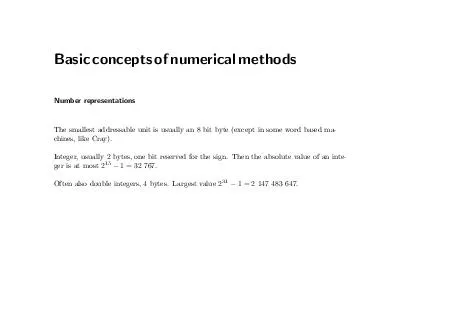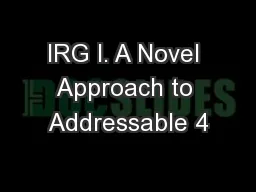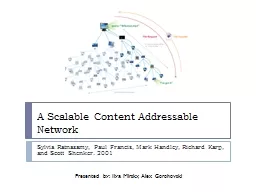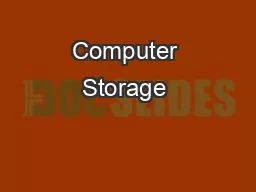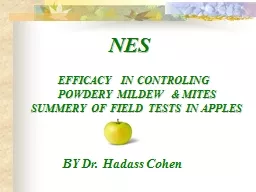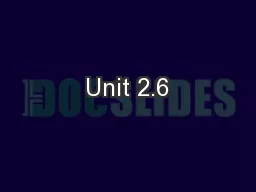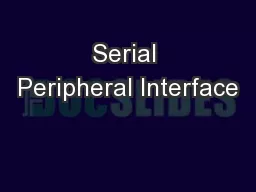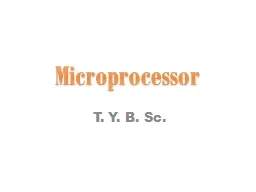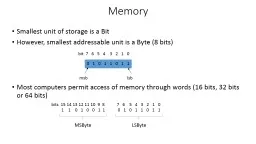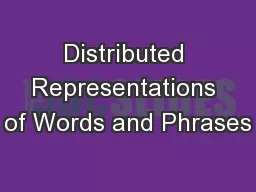PDF-Basicconceptsofnumericalmethods Number representations The smallest addressable unit is
Author : liane-varnes | Published Date : 2015-01-20
Integer usually 2 bytes one bit reserved for the sign Then the absolute v alue of an inte ger is at most 2 15 1 32 767 Often also double integers 4 bytes Largest
Presentation Embed Code
Download Presentation
Download Presentation The PPT/PDF document "Basicconceptsofnumericalmethods Number r..." is the property of its rightful owner. Permission is granted to download and print the materials on this website for personal, non-commercial use only, and to display it on your personal computer provided you do not modify the materials and that you retain all copyright notices contained in the materials. By downloading content from our website, you accept the terms of this agreement.
Basicconceptsofnumericalmethods Number representations The smallest addressable unit is: Transcript
Download Rules Of Document
"Basicconceptsofnumericalmethods Number representations The smallest addressable unit is"The content belongs to its owner. You may download and print it for personal use, without modification, and keep all copyright notices. By downloading, you agree to these terms.
Related Documents

